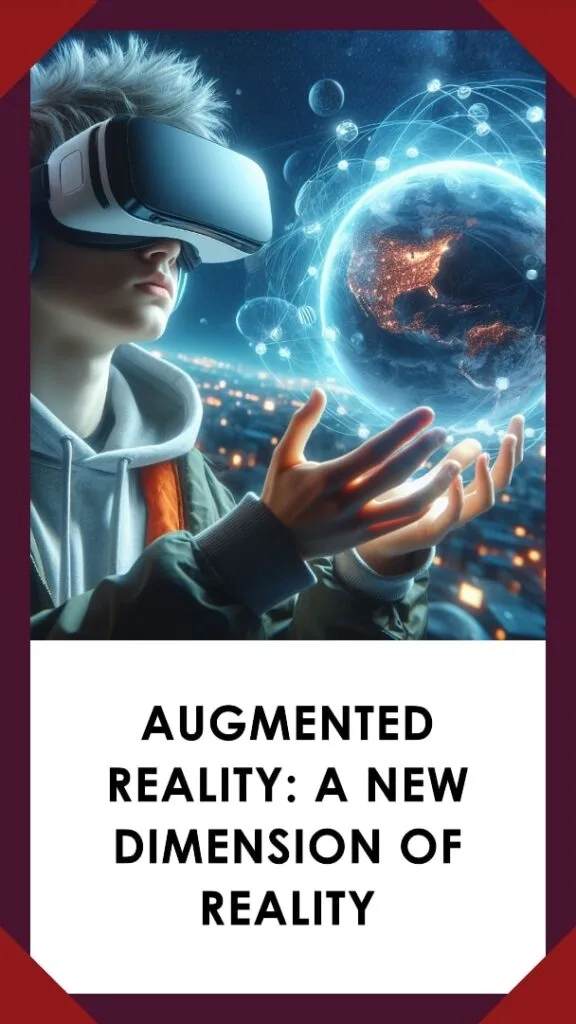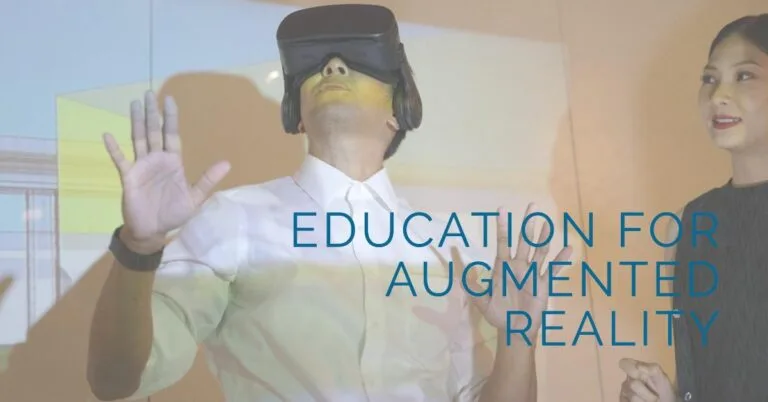
What is Augmented Reality
Have you ever dreamt of dinosaurs roaming your living room or wished you could virtually try on clothes before buying them? Well, buckle up, because Augmented Reality (AR) is here to blur the lines between imagination and reality.
AR has journeyed from the realms of science fiction into our daily lives, evolving from rudimentary systems to sophisticated applications that blend the digital and physical worlds seamlessly. This article will explore the depths of augmented reality: its definition, the technology that powers it, its myriad applications, and the challenges it faces. We’ll also explore real-life examples illustrating AR’s transformative potential across various industries.
Join me at ARVRRealm as we embark on this digital odyssey, uncovering the layers of augmented reality and how it’s reshaping the way we interact with the world around us.
What is Augmented Reality?
What does Augmented Reality mean? In simpler terms, Augmented Reality (AR) overlays computer-generated information onto the real world you see. Think of it as a magic lens that adds a digital layer to your physical environment. This layer can be visual, auditory, or even haptic (think vibrations), completely transforming how you perceive and interact with the world around you.
Here’s a fun analogy: Remember those childhood pop-up books that brought illustrations to life? AR takes that concept and injects it with a hefty dose of steroids. It’s like having a personal pop-up book following you everywhere, except way cooler and infinitely more interactive.
Now, AR isn’t to be confused with its cousin, Virtual Reality (VR). VR completely immerses you in a simulated world, while AR enhances the world you’re already in. Imagine yourself playing a video game. VR would put you right inside the game world, while AR might add a virtual health bar above your real hand holding the controller.
That’s the magic of AR – it seamlessly blends the digital with the physical, creating a truly augmented reality.
How Does Augmented Reality Work?
So, how does this technological wizardry work? The recipe for AR involves a delightful mix of hardware and software. Let’s break it down:
- Hardware: This could be a smartphone, tablet, AR glasses (think sleek, futuristic spectacles), or even specialized headsets. These devices act as the gateway between the physical and digital worlds, displaying the AR content.
- Software: This is the brain behind the operation. AR software takes digital information, analyzes the real-world environment through the device’s camera, and then superimposes that information on top of what you see.
Here’s a real-world example: Imagine you’re using an AR app to view furniture placements in your home. The app software would access the 3D model of the furniture, understand your room’s layout through your phone’s camera, and then project a virtual image of the furniture right where you’d like to place it. Pretty cool, right?
Key Characteristics of AR
- Enhancement of Real Environments: AR overlays digital content on the real-world environment.
- Interactivity in Real-Time: Users can interact with virtual contents as if they were part of the real world.
- Accurate 3D Registration: Virtual and real objects coexist and interact in three dimensions.
AR vs. VR vs. MR
- Virtual Reality (VR): Creates a completely immersive virtual environment that replaces the real world.
- Mixed Reality (MR): Not only overlays but also anchors virtual objects to the real world and allows interaction with these objects.
The Technology Behind AR
AR technology operates through devices like smartphones, tablets, heads-up displays, glasses, and headsets—each equipped with cameras and sensors that capture your real-world environment. Sophisticated algorithms then merge the captured data with computer-generated graphics, creating an enhanced sensory experience.
Devices and Software
- Devices: Smartphones, tablets, AR glasses, and head-mounted displays.
- Software: AR applications and platforms that process the sensory input to place digital content in the real world.
By leveraging these technologies, AR provides a composite view that enriches our perception of reality, offering new possibilities for interaction and learning.

The Limitless Potential of AR
AR is still in its early stages, but its potential applications are mind-boggling. Here are just a few sectors where AR is poised to make a significant impact:
- Gaming: Imagine battling aliens in your backyard or exploring hidden treasures in your city streets – AR can transform gaming into an immersive, interactive experience that spills out of the screen and into your world.
- Education: Learning about history can come alive with AR. Imagine viewing 3D models of dinosaurs or virtually dissecting a frog – AR can make education fun, engaging, and incredibly visual.
- Retail: Ever wished you could try on clothes without stepping into a fitting room? AR can make that a reality. Virtual try-on apps can project clothes onto your image, allowing you to see how they look before you buy.
- Manufacturing and Design: AR can revolutionize product design and prototyping. Imagine visualizing a new engine assembly overlaid on a real car engine or seeing how a new furniture design would fit within an existing space.
- Healthcare: AR can be a game-changer in surgery, providing surgeons with real-time information like a patient’s anatomy overlaid onto their body. AR can also be used for medical training, allowing students to practice procedures on virtual patients.
These are just a few examples, and the possibilities are truly endless. AR can potentially redefine how we interact with information, learn, shop, and even heal.
So, How Can You Get Involved in the AR Revolution?
The good news is, you don’t need a fancy lab coat to experience AR. There are plenty of AR apps available for download on your smartphone or tablet. Here are a few ideas to get you started:
- Try on that new pair of shoes you’ve been eyeing with a virtual try-on app.
- Revamp your home decor using an AR app to visualize furniture placements.
- Explore the wonders of the cosmos with an AR astronomy app that points out constellations in the night sky.
- Take a virtual museum tour and learn about historical artifacts through the power of AR.
Challenges and Considerations for AR
While AR is undoubtedly exciting, it’s important to acknowledge the challenges and considerations that come with this emerging technology.
- Privacy Concerns: Since AR often relies on cameras and location tracking, there are potential privacy concerns. It’s crucial to be mindful of the data AR apps collect and ensure you understand how it’s being used.
- Accessibility: Not everyone has access to high-end smartphones or AR glasses, which can create a digital divide. As AR technology matures, ensuring affordability and accessibility will be crucial for widespread adoption.
- The Digital Divide: Similar to accessibility concerns, the prevalence of high-speed internet is uneven across the globe. This digital divide can limit people’s ability to experience AR to its full potential.
- The Ethical Dilemma: The lines between reality and the digital world can blur with AR. It’s important to consider the ethical implications of this technology, such as the potential for creating augmented realities that distort reality or manipulate our perceptions.
- Safety Considerations: Imagine walking down the street engrossed in an AR game and not noticing a real-world obstacle. AR experiences need to be designed with safety in mind, reminding users to stay aware of their physical surroundings.
These are just some of the challenges that AR needs to overcome. However, as with any new technology, the conversation surrounding these issues will help shape the responsible development and implementation of AR in the future.
The Future of AR: A World of Possibilities Awaits
Despite the challenges, the future of AR is brimming with possibilities. Here at ARVRRealm, we’re excited to see how AR continues to evolve and transform various industries. Here are a few predictions for the exciting world of AR to come:
- The Rise of AR Glasses: Imagine a world where sleek, lightweight AR glasses replace bulky smartphones as the primary interface for accessing AR experiences. These glasses could seamlessly overlay information onto the real world, making AR an even more natural and intuitive part of our daily lives.
- The Tactile Revolution: AR is currently primarily a visual experience. However, the future holds the promise of haptic AR, which will incorporate touch sensations into the experience. Imagine feeling the texture of a virtual fabric you’re trying on in an AR shopping app.
- The Convergence of AR and AI: The marriage of AR and Artificial Intelligence (AI) can create powerful experiences. Imagine an AR system that recognizes objects in your environment and provides information about them in real time.
- The AR Enterprise Boom: AR has the potential to revolutionize various industries beyond consumer applications. Imagine construction workers using AR to visualize building plans overlaid on a construction site or surgeons receiving real-time patient data during surgery through AR interfaces.
The future of AR is a collaborative effort between tech developers, businesses, and consumers. As we work together to address the challenges and explore the possibilities, AR has the potential to enrich our lives in ways we can only begin to imagine.
Conclusion: Are You Ready to Embrace the Augmented World?
AR is no longer science fiction; it’s here, and it’s ready to reshape our world. Whether you’re a curious tech enthusiast or a business leader looking to explore new possibilities, AR offers something for everyone. So, the next time you reach for your smartphone, consider downloading an AR app and taking a step into the augmented world. You might just be surprised by what you discover.
Remember, AR isn’t just a futuristic concept – it’s here, and it’s changing how we see and interact with the world. At ARVRRealm, we’re excited to be part of this journey and can’t wait to see where AR takes us next. Stay tuned for more insights and stories from the front lines of technology!







1 thought on “What is Augmented Reality? Knowing a World of Blended Reality”